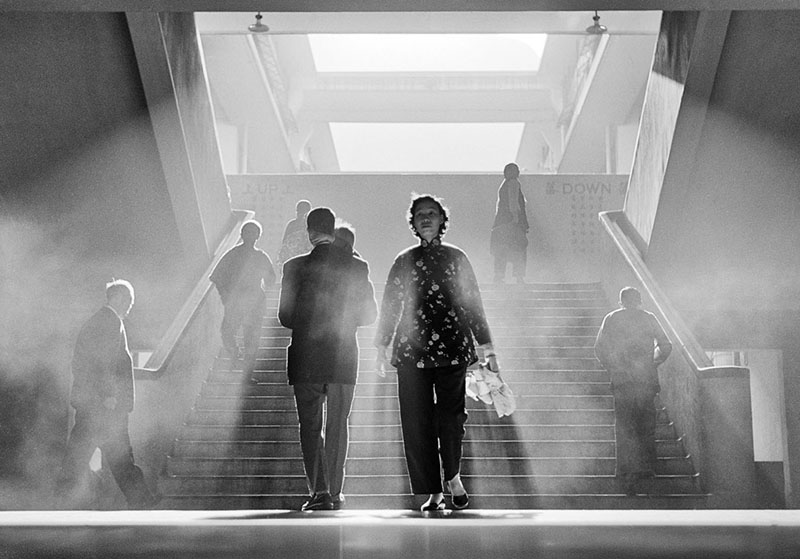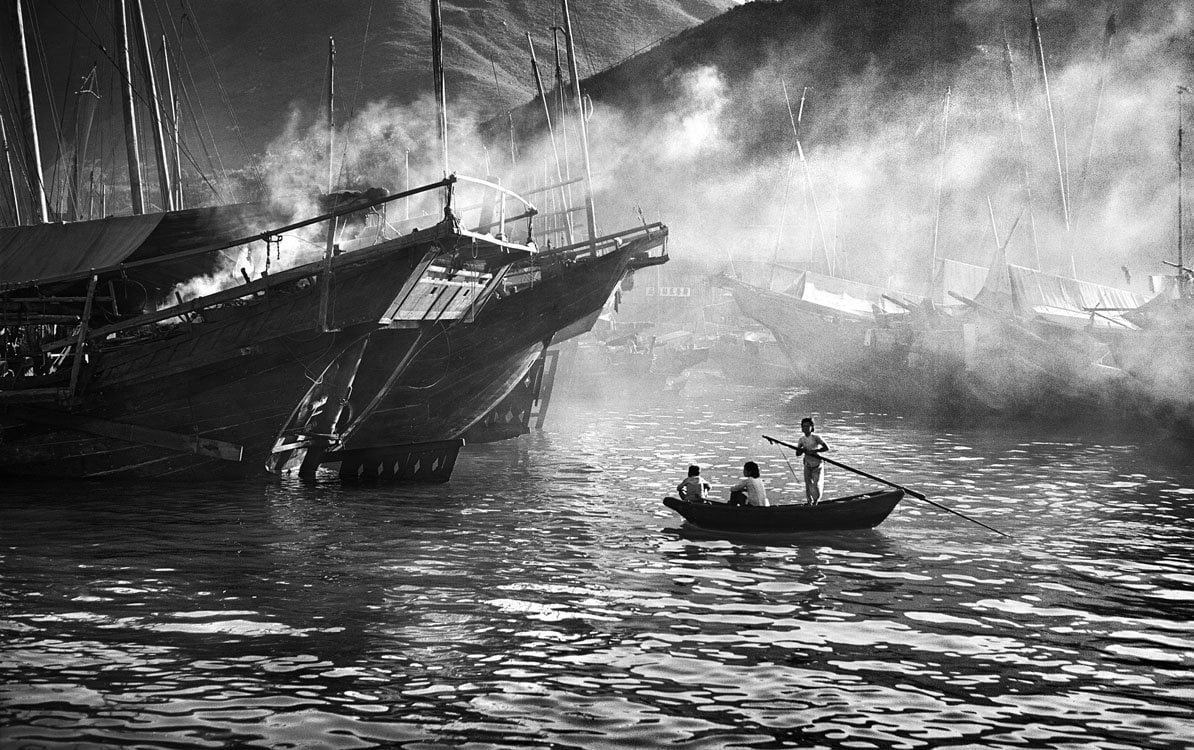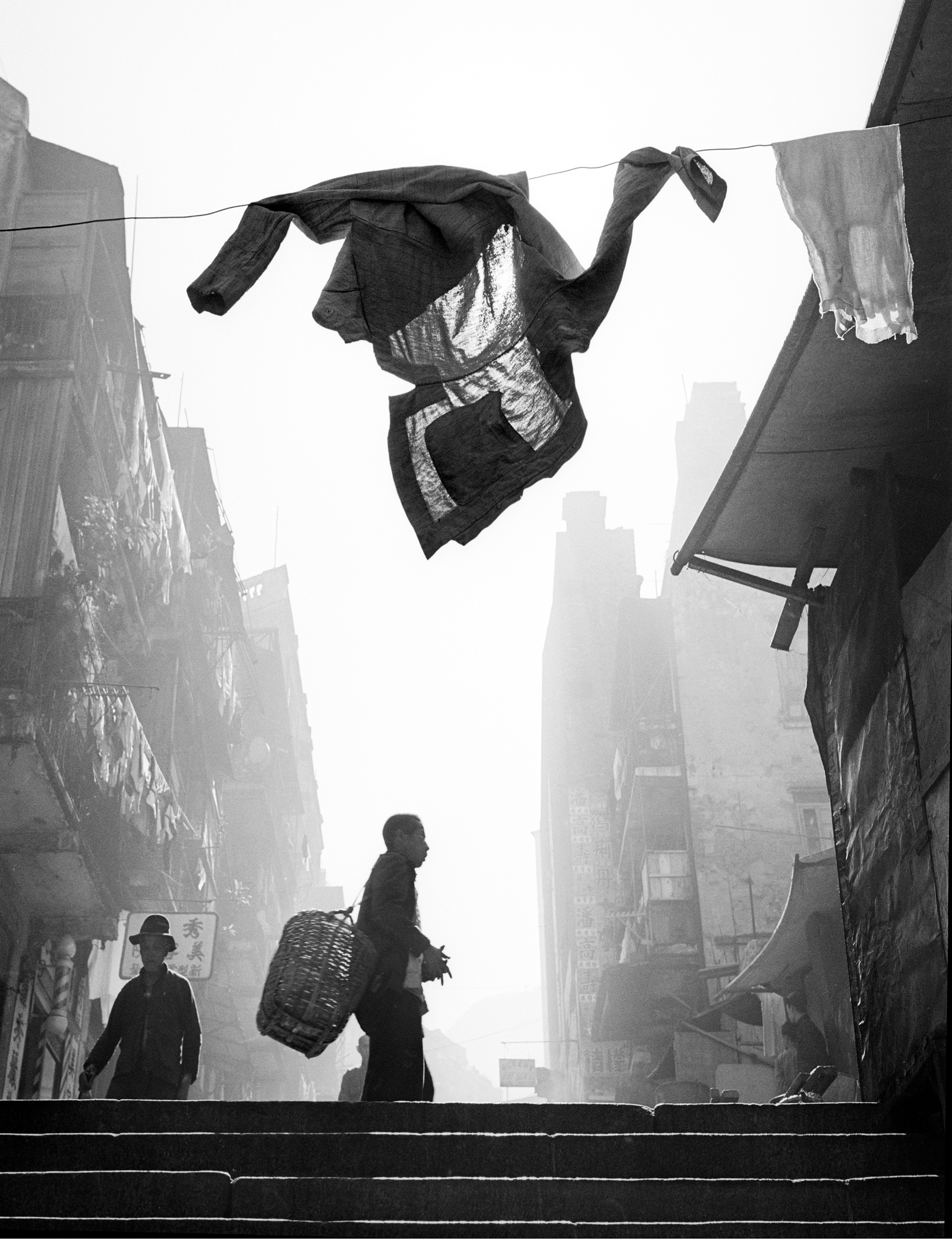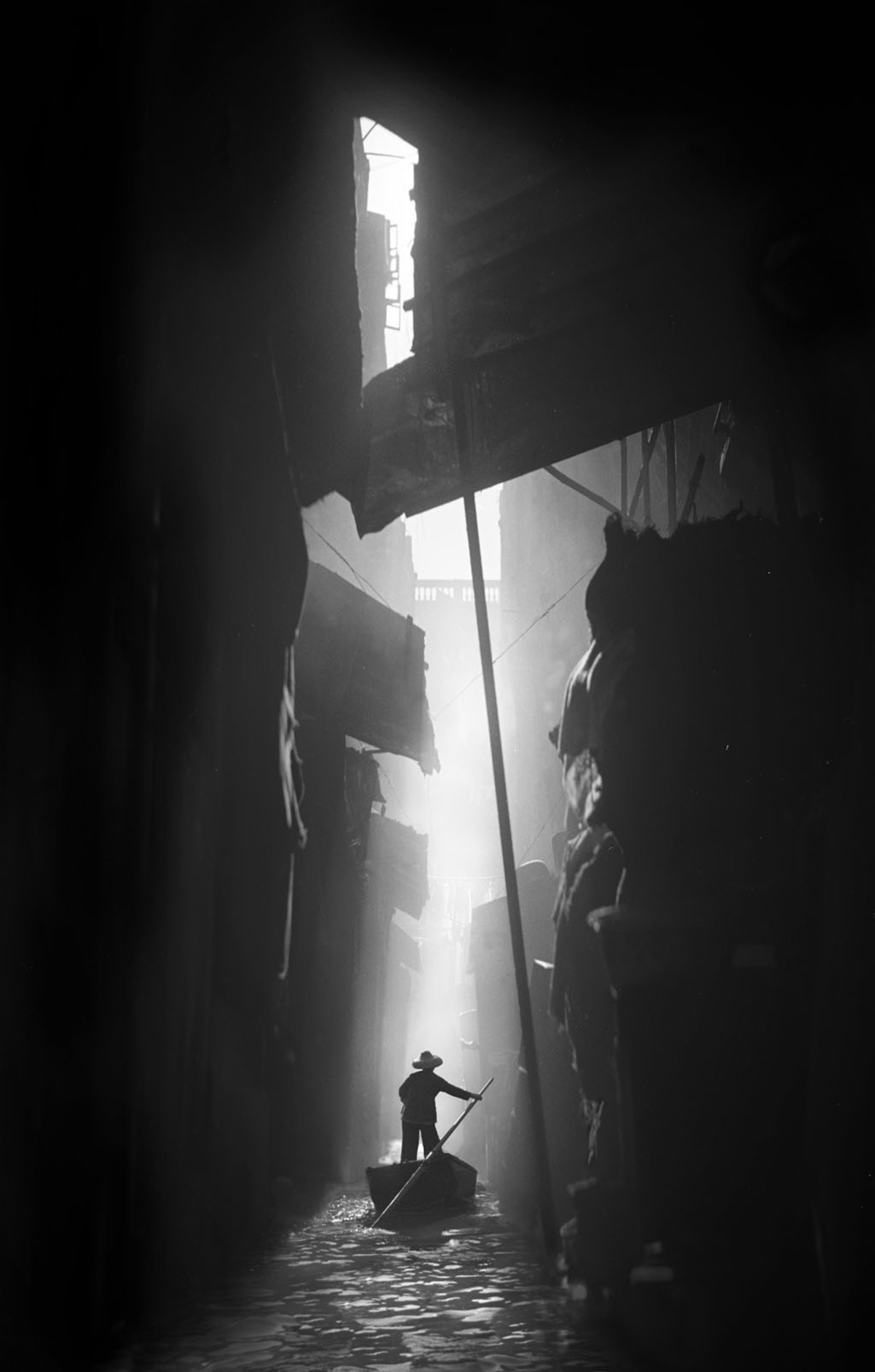Fan Ho was born in Shanghai in 1931 and started photographing at age 14 when he received his first camera, a Kodak Brownie box. Four years after that, he and his family migrated to Hong Kong from their home in Shanghai. Here, he acquired his twin-lens Rolleiflex camera, which became his trademark. To understand and explore his new home, he and his camera would travel new streets to capture everyday life. Fan Ho always waited for the right moment, focusing on textures, patterns, collisions within the environment, and geometric shapes. Part of his technical style was to use architectural structures to guide the viewer’s eyes throughout the image. His photography technique usually created a dramatic atmosphere through backlighting, dramatic atmosphere through backlighting, smoke, and light. During his career, he won over 300 awards and titles for his photography. He also moved his talents to the film industry, starting as an actor before switching roles to film director.








